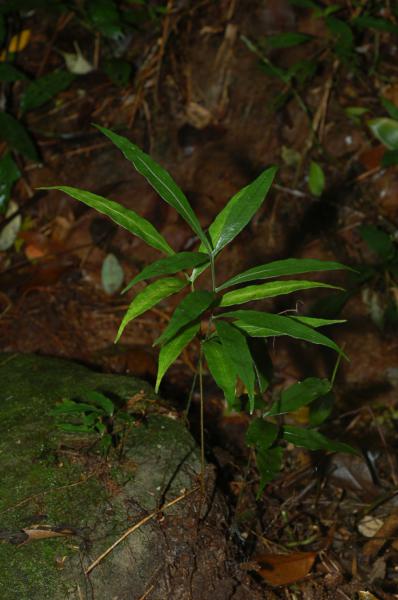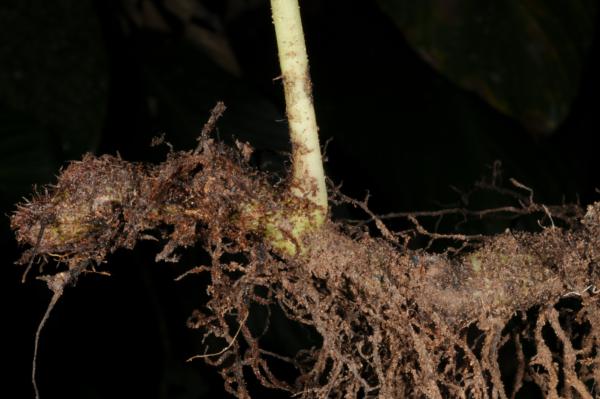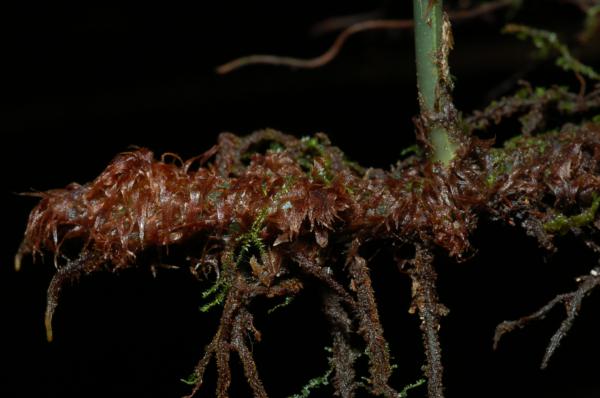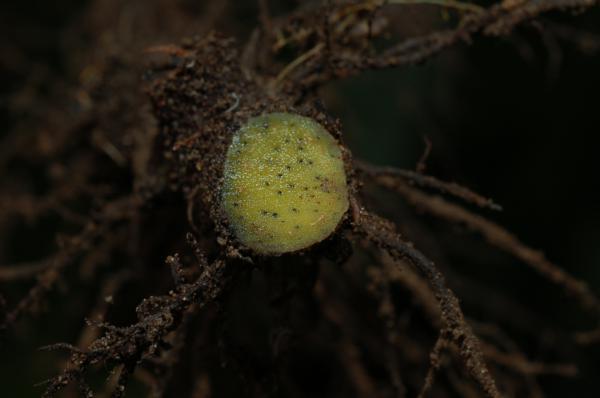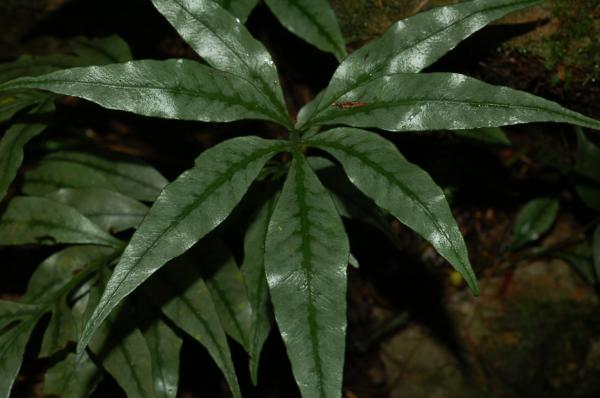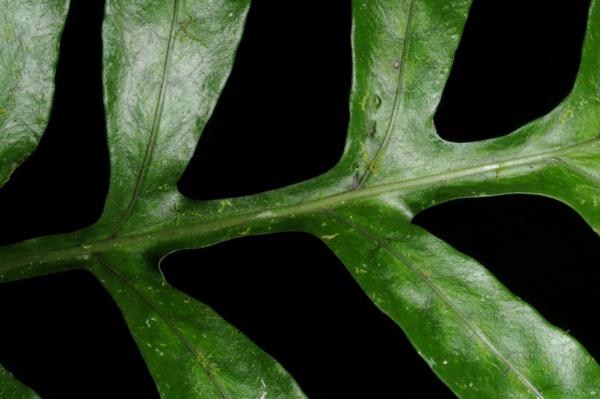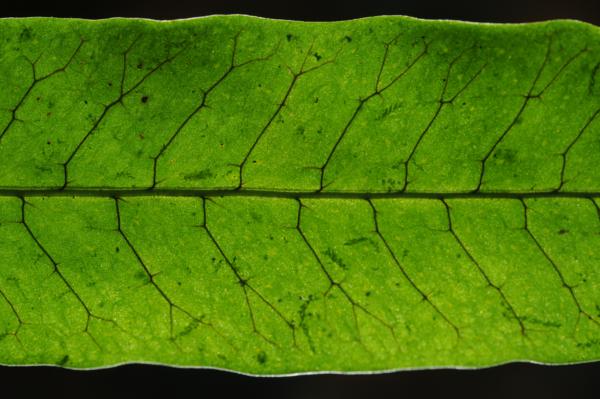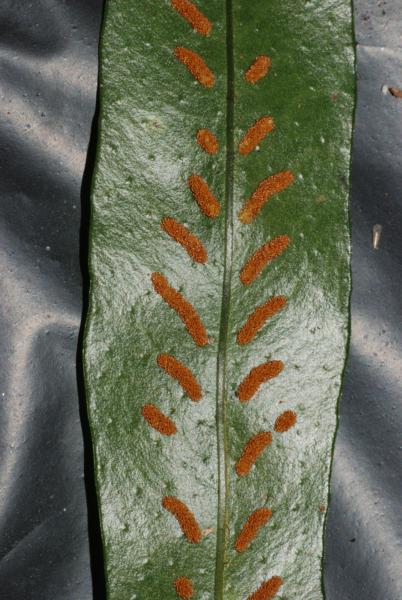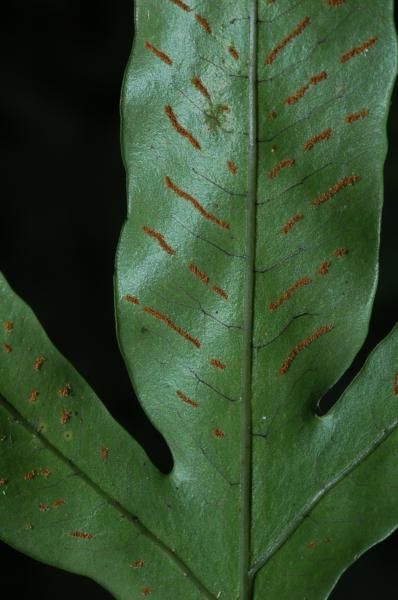
Leptochilus ellipticus (Thunb.) Noot.
Family
Polypodiaceae
Nomenclature
Leptochilus ellipticus (Thunb.) Noot., Blumea 42: 283. 1997; Nooteboom, Fl. Males., Ser. II, Ferns and Fern Allies 3: 85. 1998. – Polypodium ellipticum Thunb., Fl. Jap.: 335. 1784. – Selliguea elliptica (Thunb.) Bedd., Ferns Brit. Ind. Index. 1870; Bedd., Handb. Ferns Brit. India: 392. 1883. – Pleopeltis elliptica (Thunb.) Alderw., Bull. Dép. Agric. Indes Néerl. 27: 12. 1909. – Colysis elliptica (Thunb.) Ching, Bull. Fan. Mem. Inst. Biol. 4: 333. 1933; Tardieu & C.Chr., Fl. Indo-Chine 7(2): 497. 1941; Holttum, Dansk Bot. Ark. 20: 19. 1961. – Type: Thunberg s.n.
Hemionitis pothifolia D.Don, Prodr. Fl. Nepal.: 13. 1825. – Colysis pothifolia (D.Don) C.Presl, Epimel. Bot.: 148. 1851 [‘1849’]; Tagawa & K.Iwats., SouthE. Asian Stud. 5: 55. 1967; Tagawa & K.Iwats., Fl. Thailand 3: 540. 1989; Boonkerd & Pollawatn, Pterid. Thailand: 265. 2000. – Colysis elliptica var. pothifolia (D.Don) Ching, Bull. Fan Mem. Inst. Biol. 4: 334. 1933; Tardieu & C.Chr., Fl. Indo-Chine 7(2): 498. 1941. – Leptochilus pothifolius (D.Don) Fraser-Jenk., Taxon. Revis. Indian Subcontinental Pteridophytes : 60. 2008.
Gymnogramma pentaphylla Baker, Bull. Misc. Inform. Kew 1898: 233. 1898. – Colysis pentaphylla (Baker) Ching, Bull. Fan Mem. Inst Biol. 3: 332. 1933; Tagawa, J. Jap. Bot. 38: 328. 1963; Tagawa & K.Iwats., SouthE. Asian Stud. 5: 55. 1967; Tagawa & K.Iwats., Fl. Thailand 3: 540, f. 54.4 & 54.5. 1989; Boonkerd & Pollawatn, Pterid. Thailand: 265. 2000; Newman et al., Checkl. Vasc. Pl. Lao PDR: 29. 2007.
Polypodium dissimiliatum Bonap., Notes Ptérid. 14: 155. 1924. – Colysis dissimiliata (Bonap.) Ching, Bull. Fan Mem. Inst. Biol. 4: 330. 1933; Tardieu & C.Chr., Fl. Indo-Chine 7(2): 497. 1941.
Colysis flexiloba var. undulato-repanda auct. non (C.Chr.) Ching: Mitsuta, Acta Phytotax. Geobot. 36: 148. 1985.
Description
Rhizome creeping, about 5 mm diam., bearing fronds 0.8–4 cm apart, scaly; scales pseudopeltate, ovate or triangular, gradually narrowing from round base towards long-acuminate apex, irregularly minutely toothed at margin, or subentire in young stage, up to 2.5–8 by 0.5–2 mm, concolorously brown, clathrate. Fronds not or only very slightly dimorphic. Stipes stramineous, brown at base, sparsely scaly on lower, portion, up to 5–40(–56) cm long, terete. Laminae pinnatifid to pinnate, imparipinnate, broadly ovate-subdeltoid to circular in outline, (12–)15–35(–60) by (12–)20–35(–50) cm; lateral pinnae 2–12 free pairs, nearly equal in size, or the upper one or two slightly reduced, narrowly lanceolate to oblong-lanceolate, broadest around middle, caudately acuminate at apex, narrowly cuneate towards base, 8.5–20(–26) by 0.8–3(–4.5) cm broad, the base decurrent to form very narrow wing of rachis; veins more or less obscure, forming two rows of areoles between adjacent main veins; herbaceous. Sori linear; continuous along a line between two rows of areoles, sometimes lacking on part near margin. Spores monolete .
Distribution in Thailand
NORTHERN: Chiang Mai, Lampang, Phitsanulok; NORTH-EASTERN: Loei; SOUTH-WESTERN: Kanchanaburi, Phetchaburi.
Distribution in Laos
Hua Phan, Khammouane, Xieng Khouang.
Wider Distribution
NE India, Nepal, S China (Yunnan), Korea (Quelpart Island), S Japan, Burma, Thailand, Laos, Vietnam, Philippines.
Ecology
On mountain-slopes usually in dense forests at high altitudes, 1100–1600 m; rather rare.
Proposed IUCN Conservation Assessment
Least Concern (LC). This species is widespread and not under any known threat.
Voucher specimens - Thailand
Middleton et al. 4893, Chiang Mai, Doi Inthanon National Park (E); Middleton et al. 5057, Chiang Mai, Doi Pha Hom Pok National Park (E); Middleton et al. 5145, Loei, Phu Luang Wildlife Sanctuary (E); Middleton et al. 5120, Loei, Phu Suan Sai National Park (E).
Habit
Rhizome
Rhizome and scales
Cross section through rhizome
Whole plant variegated form
Rachis and upper frond surface
Venation
Sori
Site hosted by the Royal Botanic Garden Edinburgh. Content managed by Stuart Lindsay, Gardens by the Bay, Singapore and David Middleton, Singapore Botanic Gardens. Last updated 24 January 2012
